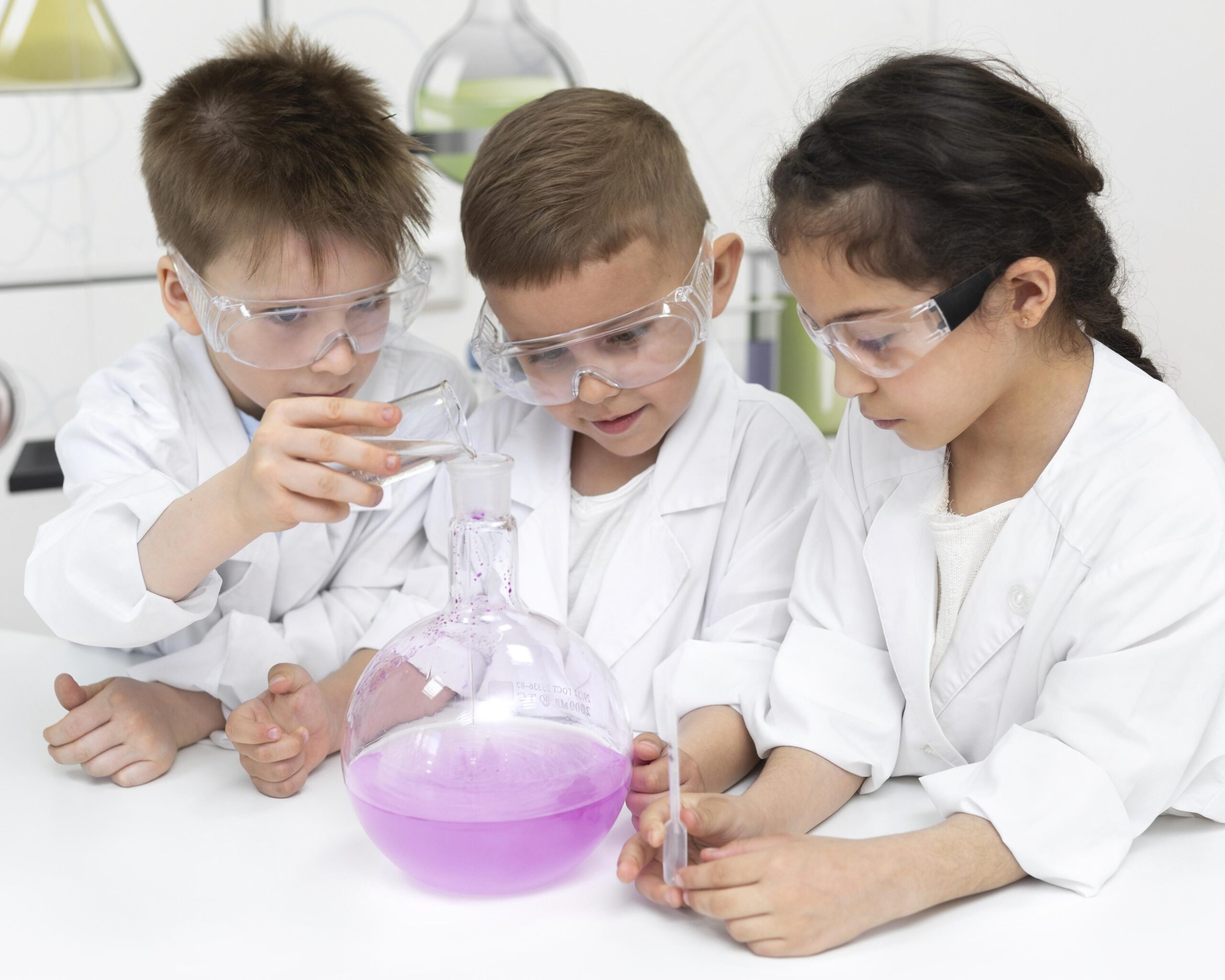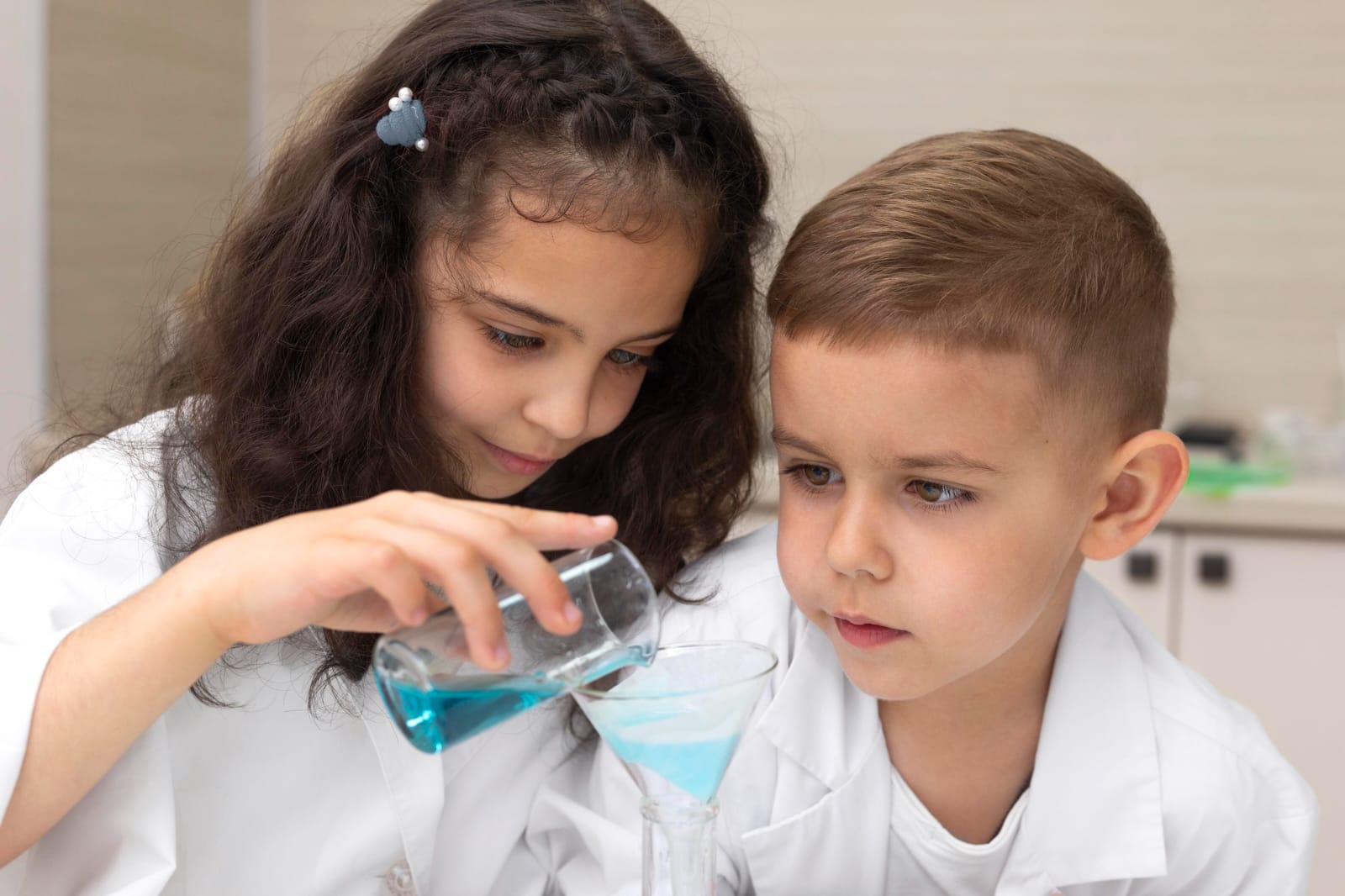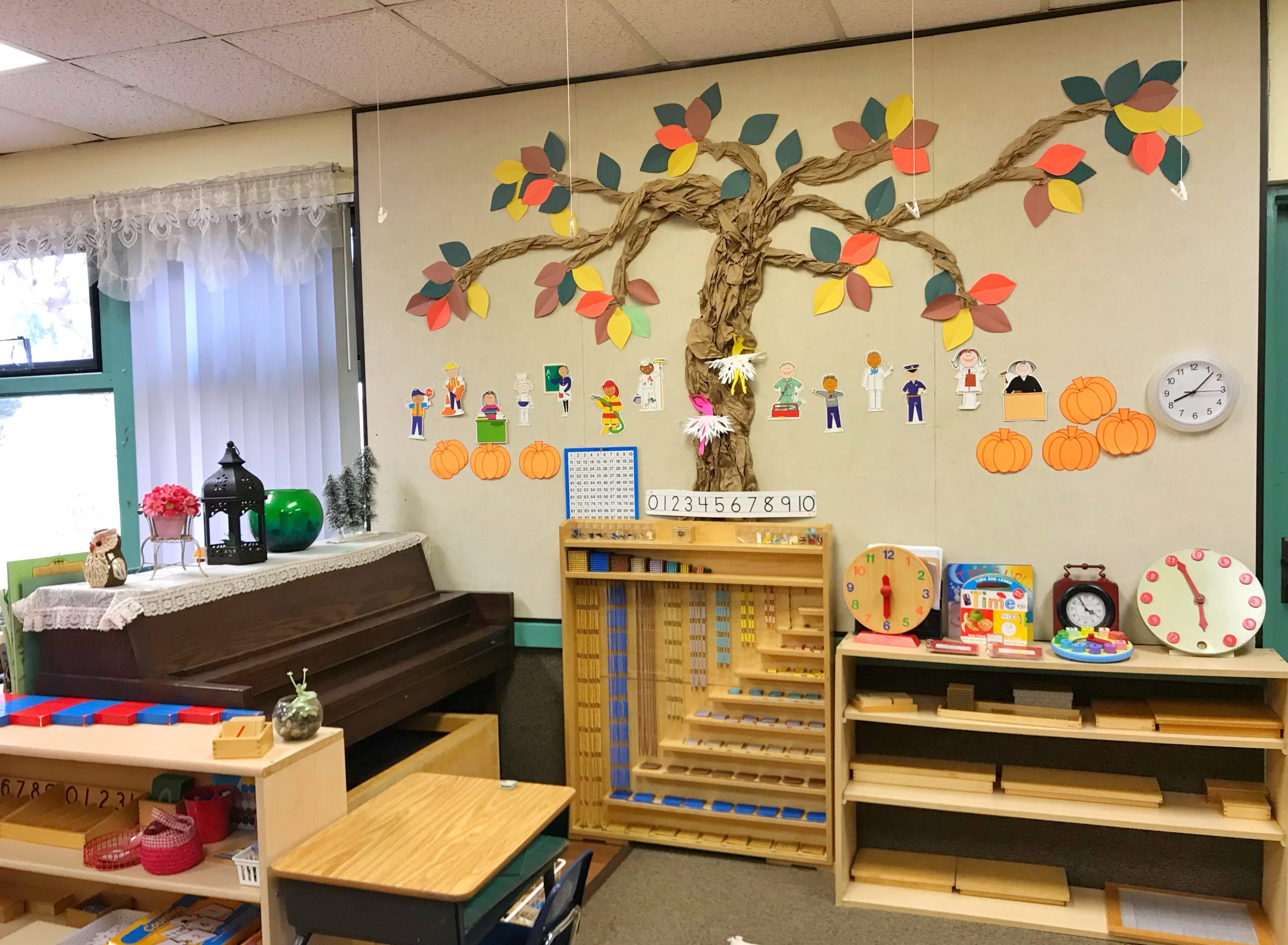
The Montessori method is a powerful tool for both education and learning at all ages. While most parents associate this method with school environments as an alternative to traditional teaching, it can also be used at home — and for fun.
This approach is especially effective in motivating children to explore new worlds, particularly in the area of science. Whether children are on vacation or simply have some free time, they can enjoy doing science experiments that spark their imagination while learning about fascinating concepts.
In this article, we will share several science experiment ideas you can try at home with your children, all inspired by the Montessori philosophy.
Remember that at Central Montessori Schools (CMS), we have a team of specialists who offer a wide variety of age-appropriate activities, always respecting the unique abilities of each child to support their growth in a nurturing and structured environment.
What Experiments Can Children Do?
As we know, children are naturally curious and eager to explore the world around them. Science experiments are an excellent way to encourage this curiosity, allowing them to learn about different subjects while having fun.
In the case of Montessori-style experiments, children are encouraged to test ideas on their own and learn from their mistakes. The Montessori method allows children to experience trial and error without fear, as there are no punishments or scolding involved. In fact, one of the core principles of Montessori education is the absence of grades or tests. Children are not expected to compete but are supported in learning at their own pace.
Although science experiments inspired by Montessori are a wonderful way to encourage early interest in learning, specialists recommend starting around age five, or once the child can recognize most of the colors and elements involved. An adult should always be present to guide and ensure safety during each activity.
Botany Experiments

One of the most common and engaging experiments for children involves botany and gardening. Children can work with soil, plants, and water while learning about the life cycle of plants and photosynthesis.
For example, plant two flowers and water only one daily. The other should receive little or no water. Over time, children will observe how water is essential for plant life.
Another experiment involves placing a plant inside an airtight container where no air can enter, and observing how it wilts. You can also try placing a plant in complete darkness to show how light affects growth. These activities help children understand that plants need soil, water, air, and light in order to survive.
Another fascinating activity is placing a plant inside a box with a small window. Children can observe how the plant gradually leans toward the light. It may seem like magic, but it is simply nature at work.
A fun and colorful experiment is to place a celery stalk or white carnation in a cup of water with food coloring. Watch as the plant absorbs the colored water and its leaves change color.
Physics Experiments
If your child enjoys playing with water, there are many simple physics experiments you can try.
For instance, demonstrate the different states of water. Begin with its liquid form. Then, pour some into an ice tray and place it in the freezer to show the solid state. To show the gaseous state, heat the water until it boils and observe the steam. For safety, children should always be accompanied by an adult when handling hot water.
Another safe option is to use a steam iron. Fill the water compartment, press the steam button, and let your child observe how vapor is released.
All of these experiments should be carried out with care to avoid any accidents.
Chemistry Experiments
Montessori-style chemistry experiments can be especially exciting for children, as they often involve visible and dramatic reactions.
A simple and fun experiment is mixing baking soda and vinegar. This creates a bubbly chemical reaction that amazes children.
To make it even more exciting, you can create a homemade volcano. Place baking soda in a cup or bottle, then add a mixture of water, food coloring, and dish soap. Finally, slowly pour in vinegar to create a foaming “eruption.”
Without a doubt, science experiments are a great way to spark creativity and curiosity in children. With the tools and support available at Central Montessori Schools, children can strengthen their skills and continue their learning at home.
Feel free to ask about our special classes and programs for all age groups.




